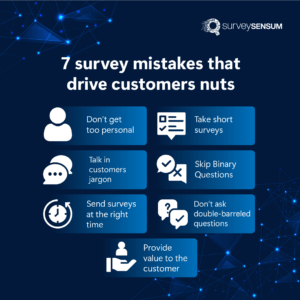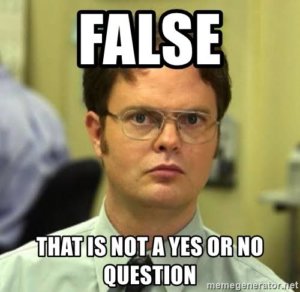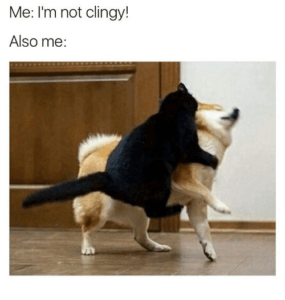5 Ways For Improving Collaboration in Software Teams
Read More

Yesterday I got a survey from a company about a recent support call. The call was great, I remember.
So I thought, Why not? Let’s go ahead and give positive feedback!
But when I opened the survey, I no longer wanted to answer their questions.
Why?
It was a never-ending survey, asking too many detailed questions, and I had to answer ALL THE QUESTIONS to complete the survey.
Well, I skipped it entirely!
This is what is wrong with many surveys.
Creating surveys is not about just Googling the questions and pasting them into a survey. There are certain unsaid rules to it and you should avoid making certain mistakes
Let’s see what are the common survey mistakes and how you can minimize errors in surveying to procure more reliable response rates.

Yes, knowing your customers’ annual income might be very crucial data for you. BUT how about getting them to ease up a bit first? Diving right into the personal stuff can be intimidating for people and they might choose to not take part in the survey at all.
I mean, you don’t ask for someone’s income on the very first meeting, do you? Likewise, start with other questions that would eventually lead to this particular one.

Do you come across surveys and questionnaires which appear to go on forever? Do you complete the survey? If yes, are you actually being honest or just doing it for the sake of it?…

Trust me, with every question after your 4th or 5th question, the customer’s responses are getting more inaccurate. No one likes to keep waiting to reach the last question of the survey.
Making the survey longer simply reduces the response rate, increases the load on customers, and reduces the accuracy. This is one of the most common survey errors but the impact can be huge.
CX Advisor and Managing Principal of EX4CX, Rick Denton also mentions his frustration with surveys that seem to go on forever.
He advises, “Keep your survey short. Do not give me a survey that is long. If you’ve gone over five questions, I am probably bailing. Even if you are going past three, I start to get a little testy. So keep it short.”
In most cases, you can easily collect all the required information you need in no more than 5 questions.
Jargon is the words or phrases which are difficult to understand and not common amongst the general population. Keep your language simple and your questions short. No customer will Google word meanings or use a dictionary to give you feedback!
In recent #CXQOTD, CX Expert and Founding Principal of Practical CX, Stephanie Thum talks about how jargon, poorly designed surveys, and long questions drive her nuts.
So, edit out any slang and colloquial language. Also, use the language or dialect most familiar with the target set of customers. Avoid offensive language and maintain politeness.
Keep in mind that your target audience may come from a variety of cultures, ages, or nationalities.
Launch FREE surveys with SurveySensum. Request a Demo.
The world is not binary – wrong or right, now or never, yes or no.

For example, let’s suppose that your question is: ‘Are you satisfied with the packaging?’ Having a straight Yes or straight No is difficult for the customer to answer.
Again, let’s suppose that your question is: ‘Do you eat cereal for breakfast?’ It makes much more sense to have a range of options: ‘Always, Often, Sometimes, Rarely, Never’ than ‘Yes or No’.
So, always provide relevant options to the customers to get accurate answers. This is crucial because it is important to get data but it is even more important to get accurate data.
Asking about the experience with a product after 1 day of purchase is a bit too clingy, isn’t it?

Aileen Day, CX Thought Leader and Owner of the Value-Driven Brand, shares a great example of sending an NPS survey just after the purchase of the product. She says, “I’d add surveying at seemingly inappropriate points in the CX journey e.g NPS survey 4 min after purchasing #SaaS or an automated survey straight after cancellation.”
The key is to strike the iron while it is still hot! Ask your customers’ feedback right after they interact with customer support, right before they abandon their shopping cart, after a new marketing campaign, or in the middle of beta testing. Get their feedback while they are actually interested to share and when their feedback can actually help you make a change.
Putting two separate ideas in the same question, like a double-barreled weapon, is a bad idea if you are looking for honest answers.
For example, “Are you satisfied with the packaging and the product?” is a double-barreled question. This is because a customer might be satisfied with the packaging and not the product itself or vice versa. If that is the case, you would get an inaccurate response. Also, the question might make the customer feel dissatisfied with the whole survey itself.
Launch FREE surveys with SurveySensum. Request a Demo.
If you don’t close the feedback loop, your customers are not bound to provide feedback again. Now, this is a critical survey error and you have to avoid it at all costs. Customers are putting in time and effort to share what they feel about your product and service and what can be improved.
So, the least you can do is provide them value.
And how can you do it?
Listen to them, understand their problems, and act on their feedback. Otherwise, what is the point of all this feedback?
Jeremy Watkin, the king of #CXQOTD and Director of CX at NumberBarn reflects upon himself and says, “Anytime I survey customers and don’t feel like I am getting value either because I’m not taking the time to actually go through the results, or you know, I haven’t thought hard enough about why I am sending the survey in the first place and what problem I trying to solve and what I am trying to discover. So, I think just a reminder for myself and as well as others, I think to be intentional about why and when we are sending the surveys out, and what value are we getting from it. Otherwise, we are wasting people’s time and that’s never a good idea.”
Ben Motteram, Principat at CXpert, seconds his thought and shares, “Not being told what was DONE with my #feedback. Closing the loop is the biggest gap in feedback practices today. I’ve just spent 15 minutes filling out your damn survey. The least you could do is tell me what changes you’ll be making as a result!”
So, always focus on providing value to your customers, or else they are not coming back!
It is impertinent to know who your customers are. Profile them. Differentiate them. Not all customers are the same. There could be multiple customer personas for your businesses. And if you do not understand or differentiate what kind of people are giving you the NPS store, how’d you prioritize their problems and resolve them?
Creating a good customer survey is a prerequisite to getting closer to your customers, in a consensual manner. There are many places where you can go wrong in constructing and delivering a customer survey. Therefore we need to be on the lookout for survey mistakes and the ways through which these errors can be minimized.
